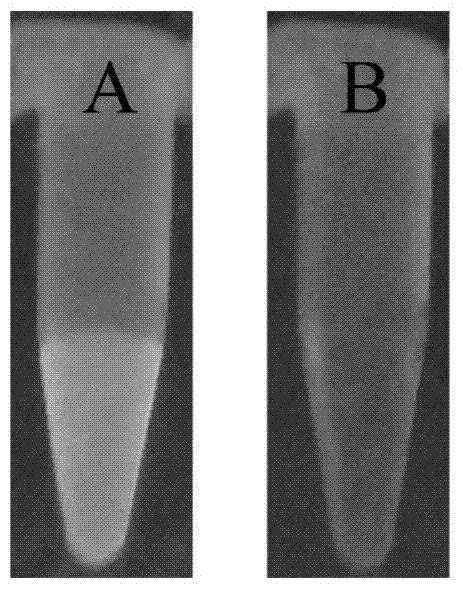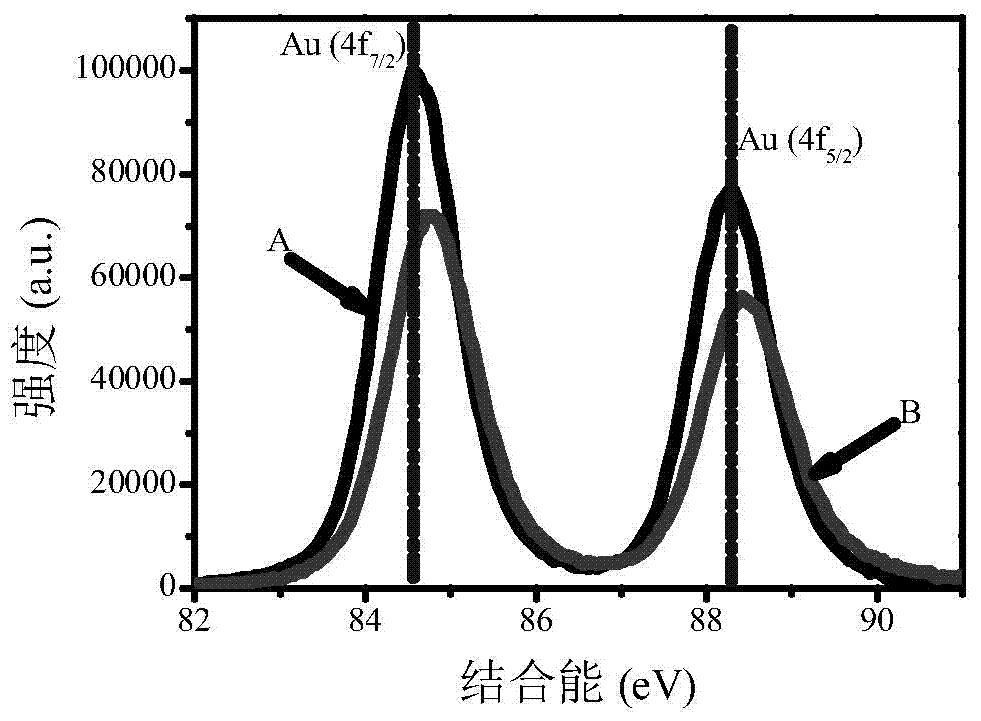Hydrogen peroxide measurement method based on N-acetyl-L-cysteine-gold nanoclusters
A technology of gold nanoclusters and cysteine, which is applied in the field of hydrogen peroxide determination, can solve the problems of high biological toxicity, poor photostability, and high cost, and achieve the effect of fast preparation process, high sensitivity, and short analysis time
- Summary
- Abstract
- Description
- Claims
- Application Information
AI Technical Summary
Problems solved by technology
Method used
Image
Examples
example 1
[0034] Add 0.6 mL of 0.5 mol / L sodium hydroxide solution and 0.4 mL of 0.02 g / L chloroauric acid solution to 4 mL of 0.08 mol / L N-acetyl-L-cysteine solution , mixed well, and placed in a 37°C constant temperature water bath to react for 2.5 h. After the reaction, the reaction solution was purified with a dialysis bag with a molecular weight cut off of 3500. The obtained gold nanocluster solution is colorless under visible light, and produces strong red fluorescence under ultraviolet light irradiation. Stored in the dark at 4°C, it can remain relatively stable for at least one month.
example 2
[0036] Get 0.2 ml of the gold nanocluster solution prepared in Example 1 and add to 0.2 ml concentration of 25 μmol / L H 2 o 2 solution (pH=3), after mixing evenly, add 0.05 ml of Fe with a concentration of 0.9 mmol / L 2+ , shake well and place in a 25°C water bath for 10 minutes. Observed under ultraviolet light, the gold nanocluster solution itself exhibits red fluorescence ( figure 1 In A), the red fluorescence of the gold nanocluster solution is quenched after the Fenton reaction ( figure 1 in B). figure 2 is the gold nanocluster solution ( figure 2 A) in A) and the gold nanocluster solution after the Fenton reaction ( figure 2 In B) Fluorescence emission spectrum graph.
example 3
[0038] Get 0.2 ml of the gold nanocluster solution prepared in Example 1 and add to 0.2 ml concentration of 100 μmol / L H 2 o 2 solution (pH=3), after mixing evenly, add 0.05 ml of Fe with a concentration of 0.9 mmol / L 2+ , shake well and place in a 25°C water bath for 10 minutes. The solution after the reaction is freeze-dried, and the dried powder is taken for X-ray photoelectron spectroscopy analysis. Such as image 3 As shown, the 4f of gold after the Fenton reaction 7 / 2 The binding energy shifted from the original 84.57 eV to 84.75 eV, indicating that the hydroxyl radicals generated by the Fenton reaction oxidized the gold atoms, which led to the quenching of the fluorescence of the gold nanoclusters.
PUM
 Login to View More
Login to View More Abstract
Description
Claims
Application Information
 Login to View More
Login to View More - R&D
- Intellectual Property
- Life Sciences
- Materials
- Tech Scout
- Unparalleled Data Quality
- Higher Quality Content
- 60% Fewer Hallucinations
Browse by: Latest US Patents, China's latest patents, Technical Efficacy Thesaurus, Application Domain, Technology Topic, Popular Technical Reports.
© 2025 PatSnap. All rights reserved.Legal|Privacy policy|Modern Slavery Act Transparency Statement|Sitemap|About US| Contact US: help@patsnap.com



